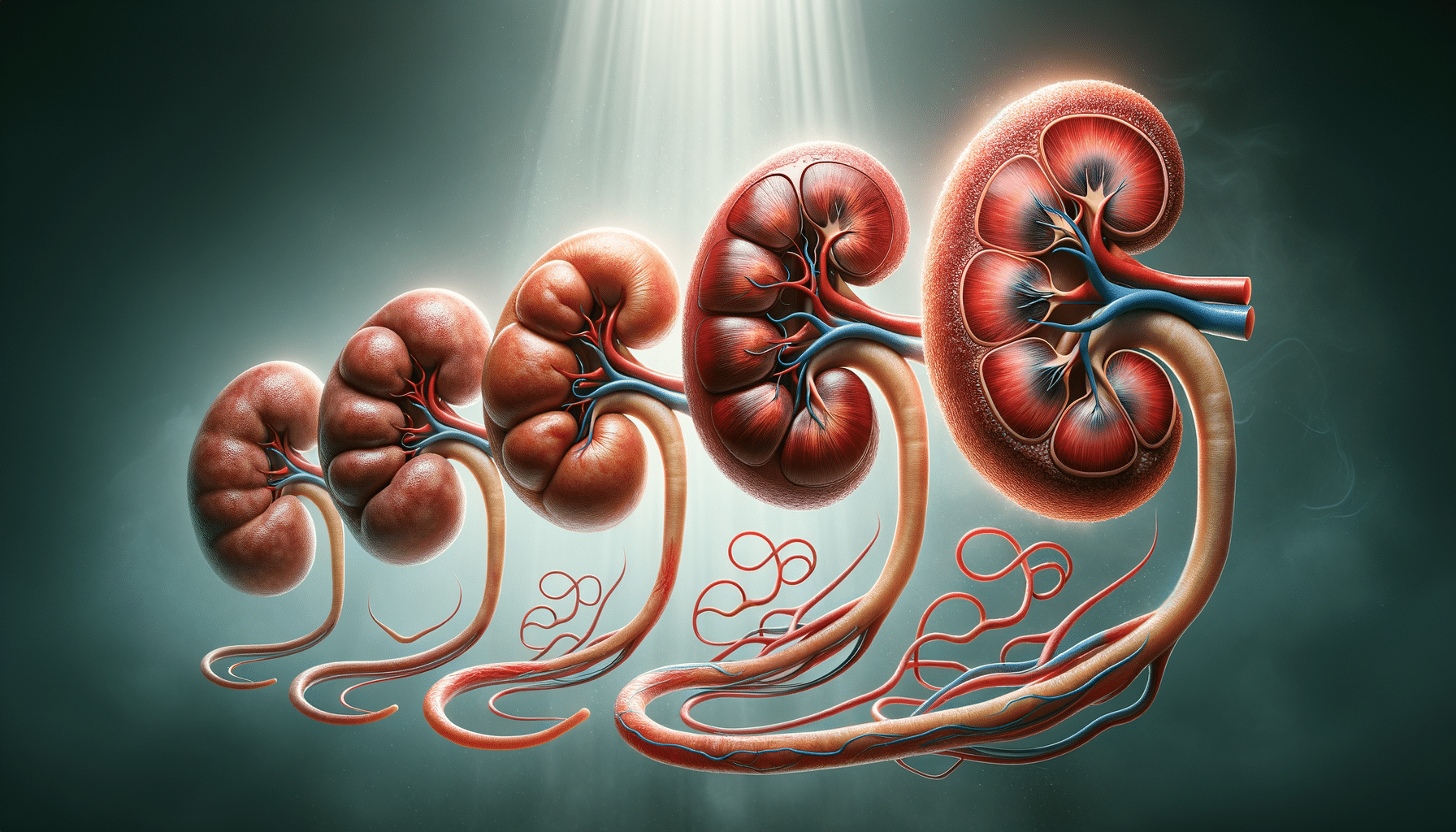
Introduction to Kidney Disease
Kidney disease is a critical health issue affecting millions worldwide. It can progress silently, often undetected until it reaches advanced stages. Understanding the stages of kidney disease is vital for early detection and effective management. This comprehensive guide aims to provide an in-depth look at the progression of kidney disease, its impact on health, and the importance of early intervention.
Stage 1: Early Kidney Damage
The first stage of kidney disease is characterized by slight kidney damage with normal or increased kidney function. At this stage, the glomerular filtration rate (GFR) is usually 90 mL/min or higher. Patients may not experience any symptoms, making regular check-ups essential for early detection. Lifestyle changes and managing underlying conditions like hypertension and diabetes can help slow the progression of the disease.
Key points to consider in Stage 1 include:
- Regular monitoring of kidney function.
- Managing blood pressure and blood sugar levels.
- Adopting a kidney-friendly diet.
- Maintaining a healthy lifestyle with regular exercise.
Stage 2: Mild Kidney Damage
In Stage 2, there is mild kidney damage with a GFR between 60 and 89 mL/min. Similar to Stage 1, symptoms may still be minimal or absent. However, this stage serves as a crucial window for intervention. Patients should work closely with healthcare providers to monitor kidney function and adjust treatment plans as necessary.
Important considerations for Stage 2 include:
- Continued monitoring of GFR and kidney function.
- Medication adjustments to control blood pressure and diabetes.
- Increased focus on dietary changes to reduce kidney strain.
- Regular consultations with a nephrologist.
Stage 3: Moderate Kidney Damage
Stage 3 kidney disease is divided into two parts: Stage 3A (GFR 45-59 mL/min) and Stage 3B (GFR 30-44 mL/min). At this stage, kidney damage is more apparent, and patients may begin to experience symptoms such as fatigue, swelling, and changes in urine output. Managing complications becomes a priority to prevent further damage.
Strategies to manage Stage 3 include:
- Regular monitoring of kidney function and symptoms.
- Addressing complications like anemia and bone disease.
- Implementing a strict diet plan to manage protein, sodium, and phosphorus intake.
- Exploring potential treatment options with healthcare providers.
Stage 4: Severe Kidney Damage
Stage 4 is marked by severe kidney damage with a GFR between 15 and 29 mL/min. Symptoms are more pronounced, and patients may experience significant health challenges. This stage requires careful management and preparation for potential kidney replacement therapy, such as dialysis or transplantation.
Key actions for Stage 4 include:
- Intensive monitoring and management of kidney function.
- Preparing for dialysis or kidney transplant options.
- Managing complications and symptoms aggressively.
- Maintaining open communication with healthcare teams.
Stage 5: End-Stage Renal Disease (ESRD)
Stage 5, also known as End-Stage Renal Disease (ESRD), occurs when the GFR falls below 15 mL/min. At this point, the kidneys are no longer able to function adequately to sustain life. Patients require dialysis or a kidney transplant to survive. Managing this stage involves a comprehensive approach to treatment and support.
Considerations for Stage 5 include:
- Choosing between dialysis or kidney transplantation.
- Managing the emotional and psychological impacts of ESRD.
- Ensuring access to supportive care and resources.
- Exploring palliative care options if necessary.
Conclusion: Navigating Kidney Disease
Understanding the stages of kidney disease is crucial for effective management and improved outcomes. Early detection and proactive treatment can significantly slow disease progression and enhance quality of life. Patients and healthcare providers must work collaboratively to monitor kidney function, manage symptoms, and explore treatment options tailored to individual needs. By staying informed and engaged, individuals can navigate the challenges of kidney disease with greater confidence and hope.